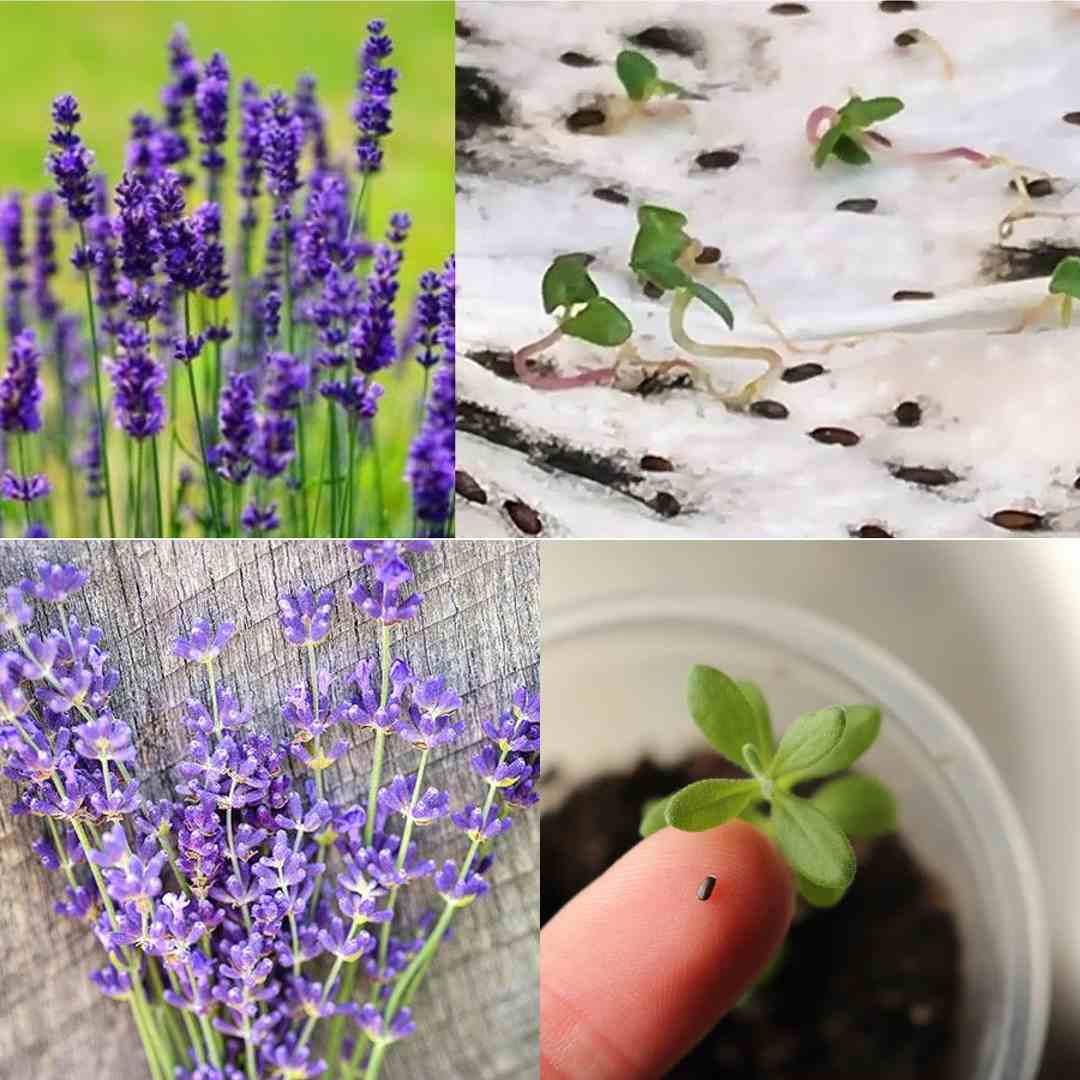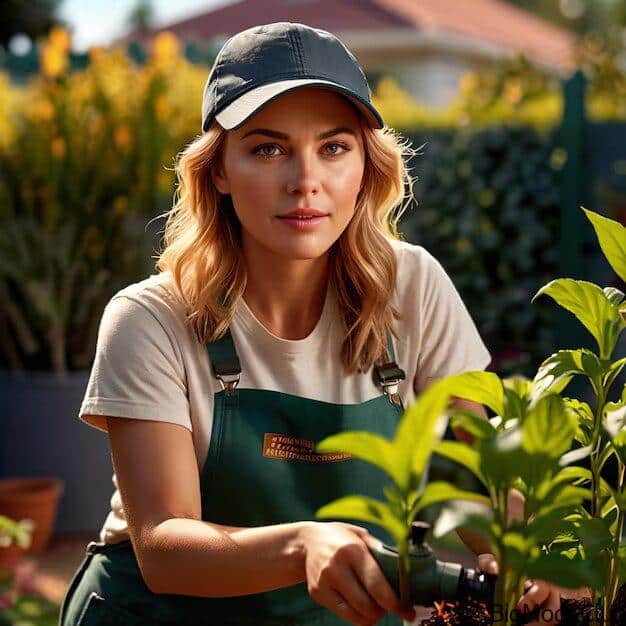Growing lavender from seed is a delightful and rewarding endeavor that can transform your garden into a fragrant oasis. Known for its stunning purple hues and calming aroma, lavender not only enhances the beauty of your landscape but also attracts pollinators like bees and butterflies. In this guide, we’ll explore everything you need to know about growing lavender from seed, including types of lavender, planting tips, and care instructions. So, roll up your sleeves, and let’s get started on this aromatic journey!
Types of Lavender You Can Grow from Seed
When it comes to growing lavender from seed, you have several varieties to choose from, each with its unique charm and benefits.
English Lavender (Lavandula angustifolia)
English Lavender is the most popular choice among gardeners for growing from seed. It’s well-known for its hardiness and beautiful fragrance. Here are a few notable varieties:
‘Hidcote’
Hidcote lavender is a favorite in North America due to its resilience and stunning deep purple flowers. It’s compact, making it ideal for smaller gardens and borders.
‘Munstead’
This low-growing variety is often used for hedges or edging. Munstead lavender produces lovely blooms and has a delightful scent, making it a favorite for many gardeners.
‘Lady’
If you’re looking for something a bit different, consider the ‘Lady’ variety. This dwarf lavender is perfect for culinary uses, offering a milder fragrance that works wonderfully in frostings and other dishes.
Spanish Lavender
Spanish lavender is another exciting option. For instance, ‘Fathead’ showcases attractive grey-green foliage and long flower spikes that bees absolutely adore. It adds a distinctive look to your garden with its unique blooms.
French Lavender
Don’t overlook French Lavender, especially the ‘Ellagance’ variety, which comes in both purple and white. These vivid flowers are not just pretty; they bring a touch of elegance to any space.
When to Start Lavender Seeds
Timing is crucial when you’re ready to grow lavender from seed. Here’s a breakdown of the best practices for indoor and outdoor planting.
Indoors
If you prefer starting lavender from seed indoors (a great method for ensuring success), you’ll want to count back from the last frost date as indicated on your seed packet. This way, you can give your seedlings a head start and protect them from the harsh outdoor conditions.
Outdoors
For those opting to sow lavender from seed directly, spring is the prime time to plant outdoors. Ensure the ground is workable and the risk of frost has passed. If you live in a milder climate, consider planting in the fall, provided your winters aren’t too cold and wet.
How to Plant Lavender Seeds Indoors
Planting lavender seeds indoors can be a fun and rewarding process. Here’s what you need to get started.
Materials Needed
To grow lavender from seed indoors, gather the following supplies:
- Seedling tray with good drainage: Ensures excess water can escape, preventing root rot.
- Thinly-textured dry potting medium or compost: Avoid anything moist or clumpy.
- Mist spray bottle: For gentle watering.
- Plastic wrap or a ziplock bag: Helps retain moisture during germination.
- Optional: A heating pad or grow lights if your space is chilly.
Cold Stratification
Cold stratification is an essential step before planting. This process involves simulating winter conditions to prepare your seeds for germination:
- Prepare the Seeds: Place your lavender seeds in potting soil or peat moss inside a ziplock bag.
- Moisten the Soil: Lightly mist the soil to keep it damp but not soggy.
- Refrigerate: Store the bag in the fridge for 3 to 6 weeks. This step can greatly improve germination rates.
Planting Steps
Once your seeds have undergone cold stratification, follow these steps to plant them:
- Fill the Seedling Tray: Add potting soil to your seedling tray, leaving some space at the top.
- Mist the Soil: Lightly spray the top of the soil with water.
- Sow the Seeds: Place 2-3 seeds per pot, gently pressing them into the soil surface.
- Cover: Use plastic wrap or a ziplock bag to cover the tray, creating a mini greenhouse effect.
- Location: Position your tray in a warm, sunny spot, ensuring it gets plenty of light.
- Daily Care: Mist the soil lightly every day, keeping the temperature above 60°F (ideally 65-75°F).
Remember, patience is key—lavender seedlings can take up to a month to germinate.
Caring for Lavender Seedlings
Once your lavender seeds sprout, they need a little TLC to thrive.
- Daily Mist: Keep misting your seedlings lightly each day to maintain moisture.
- Light Requirements: Ensure they receive at least six hours of direct sunlight or bright light from grow lights daily.
- No Fertilizer: Avoid fertilizing your lavender plants. They thrive in less nutrient-rich environments.
- Transplanting: When your seedlings reach about 2 inches tall, carefully transfer them to larger pots using a basic potting mix with perlite.
This step will give your lavender plants more room to grow and develop robust root systems.
When to Transplant Lavender Seedlings
Transplanting your lavender seedlings outdoors is an exciting milestone! Here’s when and how to do it:
Timing
Wait until the danger of frost has passed. Ideally, this is when daytime temperatures consistently reach 65°F or higher. This helps ensure your seedlings will thrive in their new environment.
Hardening Off
Before you move your seedlings outside, it’s crucial to harden them off. This process involves gradually acclimatizing them to outdoor conditions:
- Start Slowly: Begin by placing your seedlings outside for a few hours each day, gradually increasing the time spent outdoors over a week or two.
- Watch the Weather: Avoid transplanting on windy or extremely sunny days to minimize stress on your plants.
Ideal Soil Conditions
Lavender prefers well-draining, slightly alkaline soil with low nutrient content. This is a key factor in successfully growing lavender from seed, as overly rich soil can lead to poor growth and root issues.
Direct Sowing Lavender Seeds Outdoors
If you’re ready to plant lavender seeds directly in the garden, here’s what you need to know.
Choosing the Right Time
Wait until after the last frost date and when daytime temperatures are consistently warm (ideally 65-75°F). This helps ensure the best germination rates and plant health.
Preparing the Soil
- Soil Preparation: Lightly scratch the soil surface with a fork tool to aerate it.
- Adding Mix: If you have heavy or clay soil, consider adding a layer of potting mix to improve drainage.
Sowing Seeds
- Spacing: Plant seeds about 2 inches apart to allow for healthy growth. Later, you can thin them to about 18 inches apart if needed.
- Planting Depth: Pat them lightly into the soil surface and mist with water to settle them in.
Fall Planting
You can also try planting lavender from seed in the fall. Lightly sow them into the top layer of soil, allowing winter to cold stratify them. This method works best in milder climates.
Now that you have a comprehensive guide on how to grow lavender from seed, you’re ready to embark on this fragrant journey. Remember, growing lavender requires patience, care, and a little bit of love. Whether you’re choosing English, Spanish, or French lavender, each variety has its charm and benefits.
As you nurture your lavender from seed, you’ll find joy in watching them grow and flourish. Soon enough, you’ll be rewarded with beautiful blooms that not only enhance your garden but also fill the air with their delightful scent. So, grab your seeds, prepare your soil, and let’s make your garden a lavender paradise! Happy gardening!
FAQs
How long does lavender take to grow from seed?
When you grow lavender from seed, it typically takes two to four weeks to germinate. However, this timeline can vary depending on the specific variety and growing conditions. Once germinated, it may take several months for the seedlings to reach a height suitable for transplanting outdoors. Patience is key—as with all good things, growing lavender takes time!
Should I soak lavender seeds before planting?
If you’re planning to grow lavender from seed, soaking the seeds before planting is not necessary. In fact, it’s generally recommended to avoid soaking, as lavender seeds are quite delicate. Instead, you can use the cold stratification method to simulate winter conditions, which helps improve germination rates. This process involves refrigerating the seeds in moist soil for several weeks before planting.
How to start lavender from seed indoors?
To start lavender from seed indoors, follow these steps:
- Gather Materials: You’ll need a seedling tray, potting soil, a mist spray bottle, and plastic wrap or a ziplock bag.
- Cold Stratification: Place the seeds in moist potting soil inside a ziplock bag and refrigerate for 3 to 6 weeks.
- Planting: Fill the seedling tray with potting soil, lightly mist it, and plant 2-3 seeds per pot. Cover with plastic wrap or a bag to maintain humidity.
- Light and Temperature: Place the tray in a warm, sunny spot, and ensure temperatures stay between 65°F and 75°F.
- Care: Mist daily and wait for germination, which can take up to a month.
Do lavender seeds need sunlight?
Yes, if you want to grow lavender from seed, the seeds do need light to germinate effectively. When sowing seeds, it’s best to plant them on the surface of the soil without covering them, as they require light for the germination process. Once your lavender seedlings sprout, ensure they receive at least 6 hours of direct sunlight each day for optimal growth.


